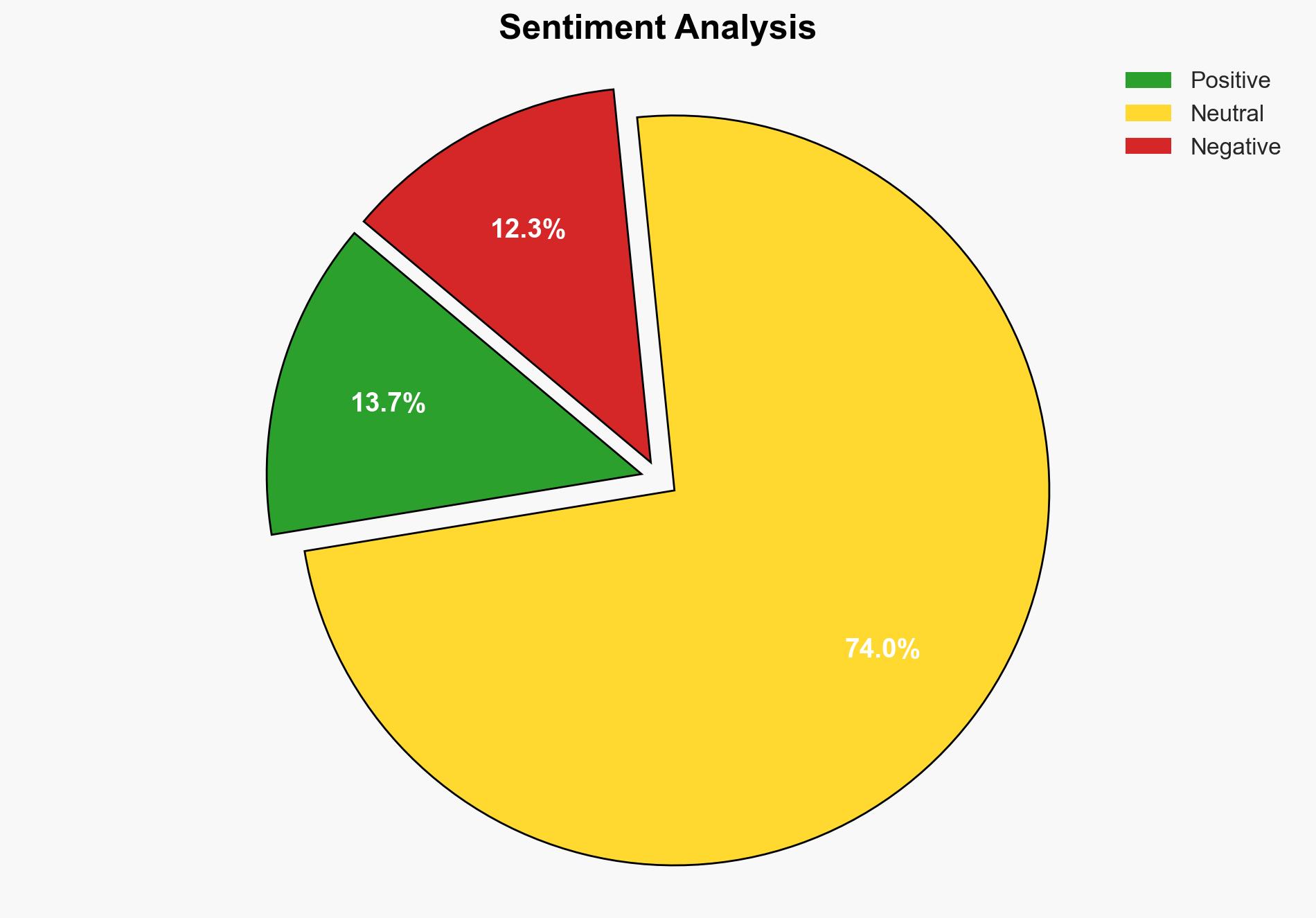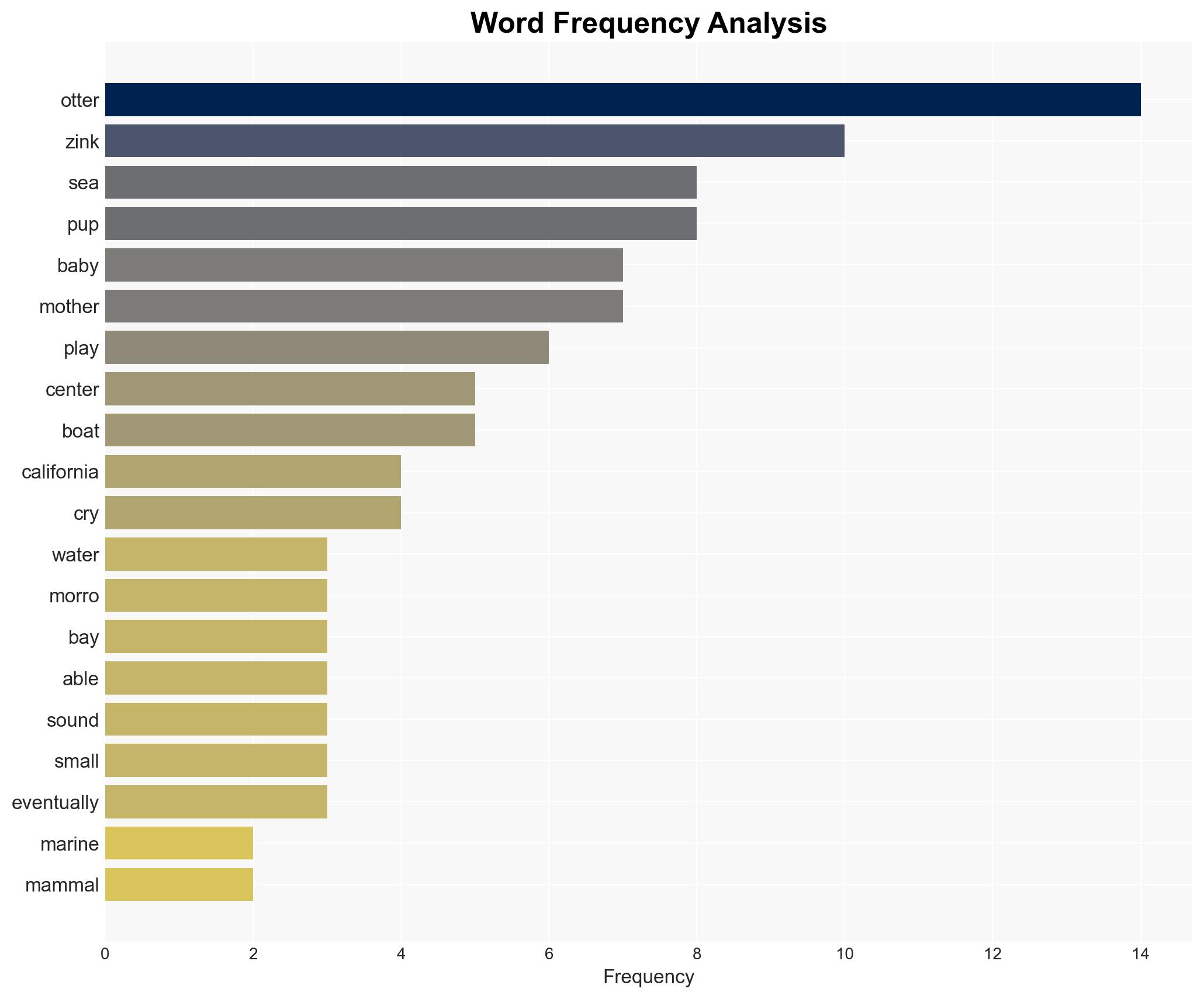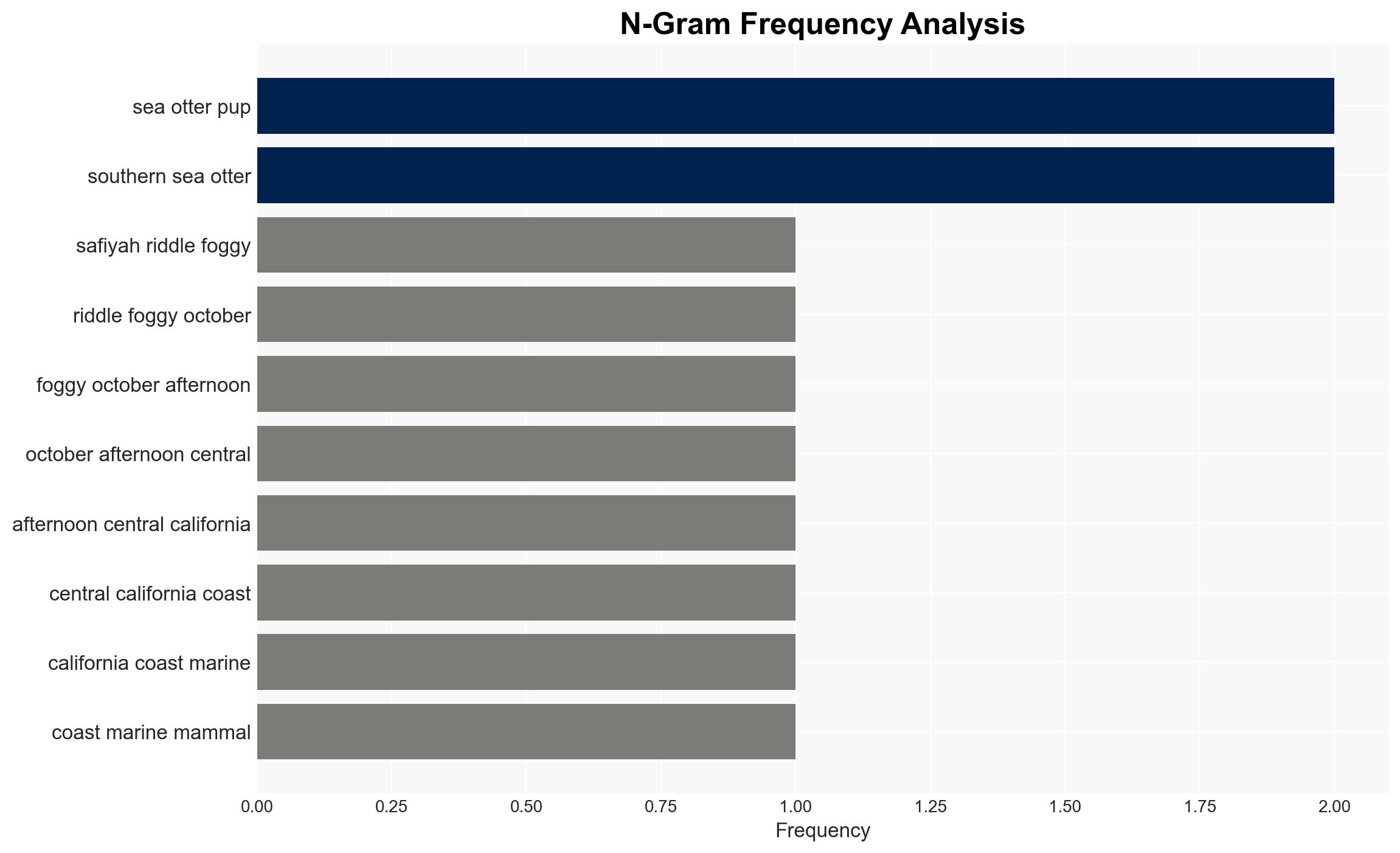Baby sea otter is reunited with mother in central California after dramatic rescue – Boston Herald
Published on: 2025-11-15
AI-powered OSINT brief from verified open sources. Automated NLP signal extraction with human verification. See our Methodology and Why WorldWideWatchers.
Intelligence Report: Baby sea otter is reunited with mother in central California after dramatic rescue – Boston Herald
1. BLUF (Bottom Line Up Front)
The successful reunion of a baby sea otter with its mother highlights the effectiveness of marine mammal rescue operations and underscores the importance of such efforts in preserving endangered species. The most supported hypothesis is that targeted rescue operations are crucial for the survival and recovery of threatened species like the southern sea otter. Confidence Level: High. Recommended action includes continued support and funding for marine mammal rescue centers and public awareness campaigns to enhance conservation efforts.
2. Competing Hypotheses
Hypothesis 1: The rescue and reunion of the sea otter pup with its mother is an isolated incident with limited broader implications for sea otter conservation.
Hypothesis 2: The rescue operation is indicative of the critical role that targeted interventions play in the broader conservation strategy for endangered species, particularly the southern sea otter.
Hypothesis 2 is more likely, as the rescue operation demonstrates the effectiveness of coordinated efforts between marine centers and local authorities in addressing threats to endangered species. The successful outcome suggests that similar interventions could significantly contribute to the recovery of the southern sea otter population.
3. Key Assumptions and Red Flags
Assumptions: It is assumed that the marine mammal center has the necessary expertise and resources to conduct such rescue operations effectively. It is also assumed that the public hotline and coordination with local authorities are reliable and efficient.
Red Flags: Potential over-reliance on technology (e.g., Bluetooth speakers) could be a vulnerability if not properly managed. Additionally, there is a risk of anthropomorphizing animal behavior, which could lead to misinterpretation of actions and needs.
4. Implications and Strategic Risks
The successful rescue and reunion could lead to increased public support and funding for marine conservation efforts. However, failure in similar future operations could undermine public confidence. There is also a risk of increased human interference in natural habitats if not carefully managed, potentially leading to unintended ecological consequences.
5. Recommendations and Outlook
- Enhance funding and resources for marine mammal rescue operations to ensure readiness for future incidents.
- Implement public awareness campaigns to educate on the importance of marine conservation and the role of rescue operations.
- Best Scenario: Increased public and governmental support leads to significant recovery of the southern sea otter population.
- Worst Scenario: Inadequate resources and public support result in a decline in successful rescue operations, threatening the species’ recovery.
- Most-likely Scenario: Continued targeted interventions and public support maintain current population levels with gradual improvement.
6. Key Individuals and Entities
Shayla Zink – Marine Mammal Center Expert
Morro Bay Harbor Patrol – Local Authority Involved in Rescue
7. Thematic Tags
Regional Focus, Regional Focus: Central California Coast
Structured Analytic Techniques Applied
- Causal Layered Analysis (CLA): Analyze events across surface happenings, systems, worldviews, and myths.
- Cross-Impact Simulation: Model ripple effects across neighboring states, conflicts, or economic dependencies.
- Scenario Generation: Explore divergent futures under varying assumptions to identify plausible paths.
Explore more:
Regional Focus Briefs ·
Daily Summary ·
Support us
·





